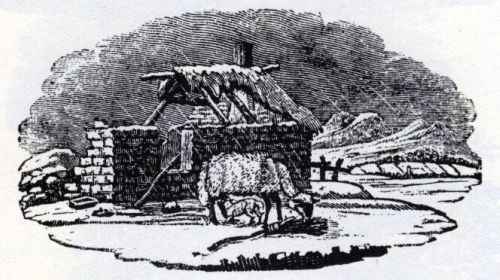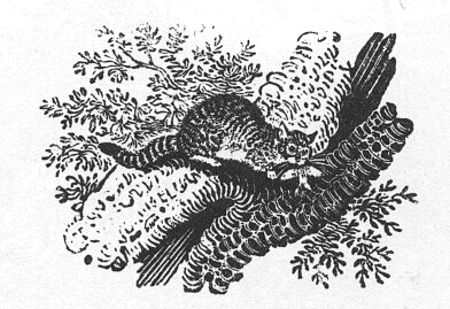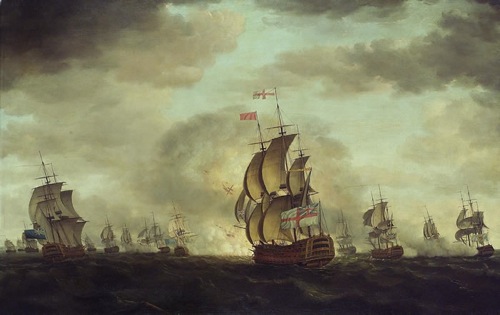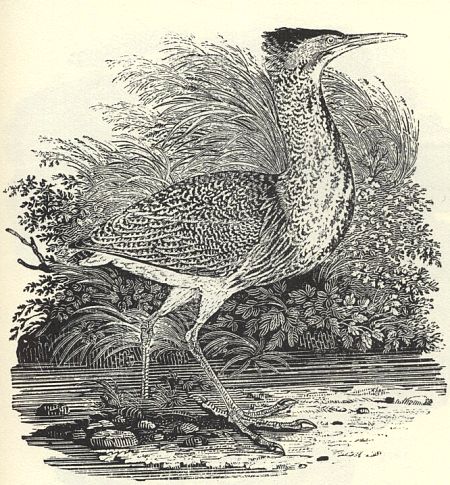Posted by sydney on Jan 21st, 2009

Execution of Louis XVI
- 1793: January 21, 1793 – Thrush sings, the song-thrush: the missle-thrush has not been heard. On this day Louis 16th late king of France, was beheaded at Paris, & his body flung into a deep grave without any coffin, or funeral service performed.
- 1791: January 21, 1791 – Sam & Ned White left us. Late in the evening the planet Jupiter shines in the E.
- 1786: January 21, 1786 – Snow gone.
- 1785: January 21, 1785 – Made a seedling-cucumber-bed. The glazier mended the light of the seedling-frame broken by hail.
- 1784: January 21, 1784 – Ice in chambers. Hares frequent the garden & do much damage.
- 1781: January 21, 1781 – At the corner of my great parlor there is such a current of air that it has half killed a box-tree is nearly killed by the current of air; while a laurel in the same circumstance seems not to be affected at all. Note: This laurel continues to flourish; Octr 1782
- 1776: January 21, 1776 – Flocks of wild-geese pass over. Snow lies very deep.
- 1775: January 21, 1775 – Received two bramblings from Mr Battin of Burkham. They are seen but seldom in these parts: are fine shewey birds.
- 1773: January 21, 1773 – Thrush sings. Titmouse begins it’s first spring notes.
- 1772: January 21, 1772 – Snow does not melt. Snipes come up the stream.
- 1770: January 21, 1770 – Peziza acetabulum.
- 1768: January 21, 1768 – Ananas budding for bloom. First crop of kidney-beans gather’d in the Hothouse at Hartley.
Notes:
“Peziza acetabulum”– The amazingly useful (to historical nature bloggers) Index fungorum suggest this is now known as Helvella acetabulum, the Vinegar cup. “Ananas” refers to pineapples, I’m not sure if White was growing these himself; I don’t think he had the resources as they required a large hothouse.
Posted by sydney on Jan 20th, 2009

- 1793: January 20, 1793 – Rime on the hanger. Mr Marsham, who lives near Norwich, writes me word, that a servant of his shot a bird last autumn near his house that was quite new to him. Upon examination it appeared to him, & to me to answer the description of the Certhia muraria, the Wall-creeper, a bird little know, but some times seen in England. Ray, & Willoughby never met with it, nor did I ever find it wild, or among the vast collections exhibited in London; but Scopoli had a specimen in his Museum, & says it is to be found in Carniola. It haunts towers, & castles, & ruins, some times frequents towns, running up the walls of tall houses, & searching the crannies, & chinks for spiders, & other insects. Some of the internal wing-feathers are beautifully marked on the inner web with two white, or pale yellow spots; & the middle of the outer web edged with red. Two of these quills, drawn in water-colours, by a young Lady, & charmingly executed, were sent me by Mr Marsham in a frank: the pencilling of these specimens is truly delicate, soft, & feathery. It is much to be regretted that she did not draw the whole bird. The claws of this bird are strong & large, says Linnaeus, & Mr Marsham; & especially the hind claw.
- 1791: January 20, 1791 – Rain & wind in the night. Thomas says, that when he got-up the Baromr was down at 27-8!
- 1788: January 20, 1788 – Bror Thomas came from Fyfield.
- 1784: January 20, 1784 – Vast snows in Cornwall for two days past.
- 1776: January 20, 1776 – Fierce frost, sun: none since the snow fell; grey. Clouds fly some from the N.W. some from the E. Hares, compelled by hunger, come into my garden, & eat the pinks. Lambs fall, & are frozen to the ground.
- 1775: January 20, 1775 – Mr Hool’s man says that he caught this day in a lane near Hackwood-park, many rooks, which attempting to fly fell from the trees with their wings frozen together by the sleet, that froze as it fell. There were, he affirms, many dozens so disabled! It is certain that Mr H’s man did bring home many rooks & give them to the poor neighbours.
- 1774: January 20, 1774 – Snow remains. Vast halo round the moon.
- 1772: January 20, 1772 – Thermor abroad in the sun rise 11: in the wine-vault 43. Snow dry & frozen: very deep.
Notes:
The winters of 1775 and particularly 1776 are some of the coldest on record in England, matched only by those of 1683-4, 1739-40, and 1962-3. A “falling” lamb is being born.
From the red on the wings, I’m guessing “Certhia muraria” is now termed Tichodroma muraria, and is classified as ‘mega’ rare in the British isles, being native to south-eastern Europe.
Posted by sydney on Jan 19th, 2009
- 1792: January 19, 1792 – The wood-men begin to fell beeches on the hanger.
- 1791: January 19, 1791 – This morning the Baromr at Newton was only 28!
- 1790: January 19, 1790 – A trufle-hunter came with his dogs, & tryed my tall hedges, where, as he told us, he found only a few small bulbs, because the season was over: in the autumn, he supposes, many large trufles might be met with. He says, trufles do not flourish in deep woods, but in hedge-rows, & the skirts of coppices within the influence of the sun & air.
- 1788: January 19, 1788 – Received from London a quarter of an hundred of Salt fish.
- 1787: January 19, 1787 – Mice eat the crocus roots.
- 1776: January 19, 1776 – Snow falling, grey & light, dark & still.
- 1771: January 19, 1771 – Small snow. More snow. By a letter from town it appears that in London in an hard frost Martin’s thermometer is just at the same pitch abroad in the area, that it is with me in the dining-room without a fire.
Posted by sydney on Jan 18th, 2009

- 1789: January 18, 1789 – A swan came flying up the Lythe, & without regarding objects before it, dashed itself against Dorton-house, & fell down stunned. It recovered, & was sold the miller at Hawkley.
- 1786: January 18, 1786 – Covered the spinage-bed with straw: the celeri & winter-lettuces are also covered.
- 1784: January 18, 1784 – Clouds put up their heads.
- 1780: January 18, 1780 – The ground very dirty, & hollow from the frost.
- 1776: January 18, 1776 – Cats catch all the birds that come in from the cold. Wagtails retire to brooks, & rivulets; there they find the aureliae of water-insects. Titmice pull the mosses & lichens off from the trees in quest of grubs &c: Nuthatches do the same.
- 1774: January 18, 1774 – Considerable snow on the ground, frost.
- 1772: January 18, 1772 – Snow covers the ground. Larks congregate in vast flocks.
- 1771: January 18, 1771 – Barometer sinks apace. Dark sun, stars dark.
- 1770: January 18, 1770 – Vast aurora: a red fiery broad belt from E. to W.
- 1769: January 18, 1769 – The sheep on the downs are very ragged & their coats much torn: the shepherds say they tear their fleeces with their own mouths, & horns: & that they are always in that way in mild wet winters, being teized & tickled with a kind of lice.
Posted by sydney on Jan 17th, 2009
- 1793: January 17, 1793 – Turnip-greens come in.
- 1792: January 17, 1792 – The Antirrhinum Cymb. which flourished, & blossomed thro’ all last winter, & the summer & autumn following, now killed by the frost. Hence it is probably that in milder regions it is at least a biennial, if not a perennial. Before, it has always dyed every winter as soon as the hard frosts began to prevail.
- 1791: January 17, 1791 – Sam & Ned White came from Fyfield.
- 1789: January 17, 1789 – Fine thaw, snow decreased.
- 1787: January 17, 1787 – Strong aurora.
- 1779: January 17, 1779 – Ice on ponds is very thick.
- 1776: January 17, 1776 – Rooks come to dunghills close to houses. Sky-larks resort to farm-yards.
- 1771: January 17, 1771 – Paths very dusty. Blue mist still.
- 1769: January 17, 1769 – Wood-lark whistles. Hogs carry straw.
Notes:
I can’t identify the specific variant here, but Antirrhinum is the snapdragon. It is indeed a perennial in its native Mediterranean climate.
Posted by sydney on Jan 16th, 2009

Battle of Cape St. Vincent, Francis Holman
- 1793: January 16, 1793 – Dark, & sharp frost.
- 1791: January 16, 1791 – A disorder prevails among the horses: but has not reached this village yet.
- 1790: January 16, 1790 – Turnip-greens come in.
- 1789: January 16, 1789 – Now the rope is lengthened my well furnishes me with water.
- 1788: January 16, 1788 – Some thaws. Load of straw brought in.
- 1780: January 16, 1780 – On this day Sr George Rodney defeated the Spanish fleet off Cadiz. A precipitate thaw. The rain last night tore-up the N. field lane very badly.
- 1779: January 16, 1779 – Sowed the great mead in part, & all Berriman’s field (laid down last year with grass-seeds) with good peat-ashes.
- 1777: January 16, 1777 – Grey sun, sweet day. Bees, & flies moving: air full of insects: spiders shoot their webs: butter-fly out.
- 1776: January 16, 1776 – The brambling appears in farm-yards among the chaffinches. It is rare in these parts.
- 1774: January 16, 1774 – Jupiter, the moon ,& Venus being this evening nearly in a line, & almost at equal distances, make a beautiful appearance. Bat appears: they are out at times every month in the winter: but not in frost.
- 1772: January 16, 1772 – Severe air. Icicles. Cutting wind & frost.
All your Battle of Cape St. Vincent facts here.
Posted by sydney on Jan 15th, 2009
- 1789: January 15, 1789 – Snow melts very fast. The frost, where a grave was dug, appeared to have ent’red the ground about 12 inches.
- 1783: January 15, 1783 – Hailstorm in the night.
- 1781: January 15, 1781 – Millers complain for want of water. At the end of the new parlor a box-tree is nearly killed by the current of air; while a laurel in the same circumstance seems not to be affected at all. from Novr 25 to Jan 18 there fell only 69 of rain, & snow! less than 3/4 of an inch.
- 1769: January 15, 1769 – Foul, stormy day. Mezereon & groundsel blow.
Posted by sydney on Jan 14th, 2009

Bittern, T. Bewick
- 1793: January 14, 1793 – Snow-drops bud, & winter-aconites blossom. John White, & wife, & Holt White left us.
- 1792: January 14, 1792 – Lord Stawell sends me a cock & and hen brambling.
- 1791: January 14, 1791 – Ivy berries swell, & grow: there have been no frosts to check them.
- 1790: January 14, 1790 – A large speckled diver or loon was sent to me from the Holt, where it was shot by one of Lord Stawell’s servants as it was swimming & diving on a large lake or pond. These birds are seldom seen so far S. in mild winters.
- 1789: January 14, 1789 – The snow drifted in thro’ the tiling now melts, & floats the ceiling. A Gooseander & a Dun diver, a drake and a duck of the same species, Mergus Merganser, were brought me this morning. They are beautiful birds, never to be seen in the South but in hard frosts: they were shot on the stream at Hedleigh.
- 1786: January 14, 1786 – Sowed 36 bushels of peat-ashes on part of my farthest field, which has never been ashed since it was laid-down to grass. Qu: if it be right to sow ashes amidst so much rain & snow? So much moisture must probably dilute the ashes too much, & render them of no effect. Much snow on the ground. These ashes did no manner of good.
- 1782: January 14, 1782 – On this day Sr G. Rodney, after having been wind-bound for several weeks, sailed to the W. Indies from Torbay.
- 1781: January 14, 1781 – The ground is as hard as a rock. The roads & fallows are dusty.
- 1778: January 14, 1778 – The wind very still, for so low a barometer. Foxes abound in the neighbourhood, & are very mischievous among the farm-yards, & hen roosts. The fox-hounds have lately harrassed Harteley-woods, & have driven them out of those strong coverts, & thickets.
- 1776: January 14, 1776 – Rugged, Siberian weather. The narrow lanes are full of snow in some places, which is driven into the most romantic, & grotesque shapes. The road-waggons are obliged to stop, & the stage-coaches are much embarassed. I was obliged to be much abroad on this day, & scarce ever saw its fellow.
- 1775: January 14, 1775 – The hawk proinith, says the new glossary to Chaucer; this is picketh, or dresseth her feathers: from thence the word preen, a term in ornithology, when birds adjust, & oil their feathers.
- 1774: January 14, 1774 – Vast rain in the night whih thunder. A bittern was shot in shrub-wood. A dog hunted it on the foot, & spring it in the covert. On the same day Mr Yalden shot one in a coppice in the parish of Emshot: & about the same time on was killed in the parish of Greatham. Thses birds are very seldom seen in this district, & are probably driven from their watery haunts by the great floods, & obliged to betake themselves to the uplands. The wings expanded measured just four feet: the tail-feathers shafts & all were just five inches long, & 10 in number. The neck-feathers were very long, & loose like those on the neck of a roost-cock. These birds weighed undrawn, & feathers & all, each 3 pds & 2 oun: The serrated claw on each middle toe is very curious! Tho’ the colours on the bittern’s wings & back are no ways gaudy or radiant, yet are the dark & chestnut streaks so curiously blended & combined, as to give that fowl a surprizing beauty. Both the upper & lower mandible are serrated towards the point, & the upper is emarginated. Two of these birds I dressed, & found the flavour to be like that of the wild duck, or teal, but not so delicate. They were in good case, & their intestines covered with fat. In the crop or gizzard I found nothing that could inform me on what they subsisted: both were quite empty. I found nothing like the flavour of an hare! The flesh of these birds was very brown. It appears since that all these bitterns were killed in Selborne parish, & probably were all of the same family.
- 1772: January 14, 1772 – Vast white dew.
Posted by sydney on Jan 13th, 2009
- 1792: January 13, 1792 – Vast frost-work on the windows.
- 1791: January 13, 1791 – The earth is glutted with water: rills break out at the foot of every little hill: my well is near half full. The wind in the night blew down the rain-measurer.
- 1790: January 13, 1790 – driving rain all day.
- 1789: January 13, 1789 – Deep snow: snow drifted through every crevice. Swift thaw. Snow that had been driven in now melts & drips thro’ the garret-ceiling.
- 1776: January 13, 1776 – The snow is drifted-up to the tops of gates, & the lanes are full. Poultry do not stir-out of the hen-houses: they are amazed, & confounded in snow, & would soon perish.
Posted by sydney on Jan 12th, 2009
- 1793: January 12, 1793 – Vast rain in the night, lightening. Great stream in the cart-way.
- 1791: January 12, 1791 – Mr Churton left us.
- 1790: January 12, 1790 – Snow-drops blow. We have in the window of the stair-case a flower-pot with seven sorts of flowers, very sweet & fragrant.
- 1789: January 12, 1789 – Thermr 8; at South Lambeth 2 1/2. This frost, as frosts usually do, went-off soon after the Thermr was at the lowest.
- 1780: January 12, 1780 – For want of snow to cover, the garden-things suffer; cabbages, spinage, celeri, &c.
- 1776: January 12, 1776 – A very deep snow. Poor birds begin to be distress’d, & to come in a door: hares do not stir yet. Hares lie-by at first, ’til compelled to beat-out by hunger.





 Theme Ported to
Theme Ported to